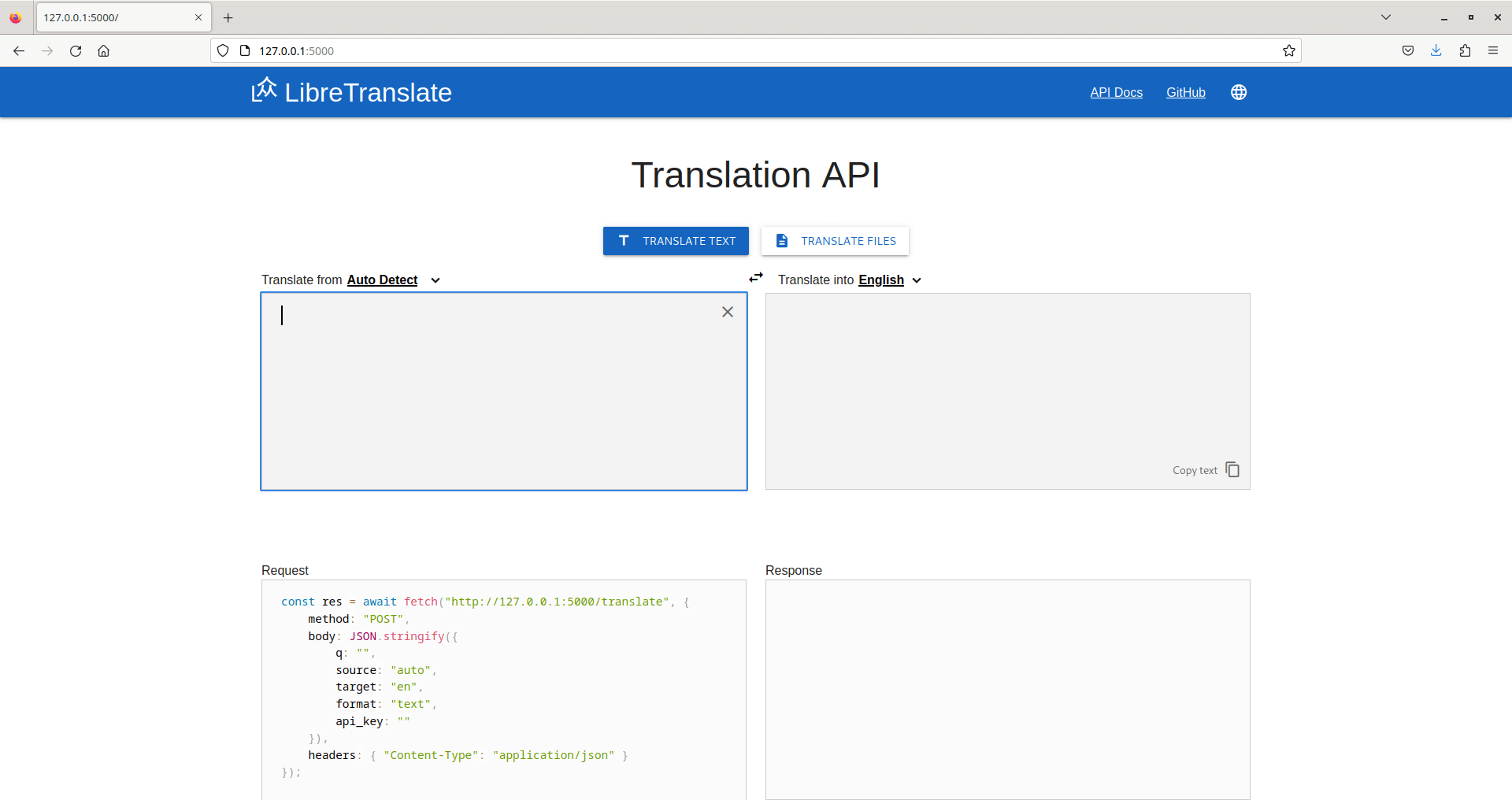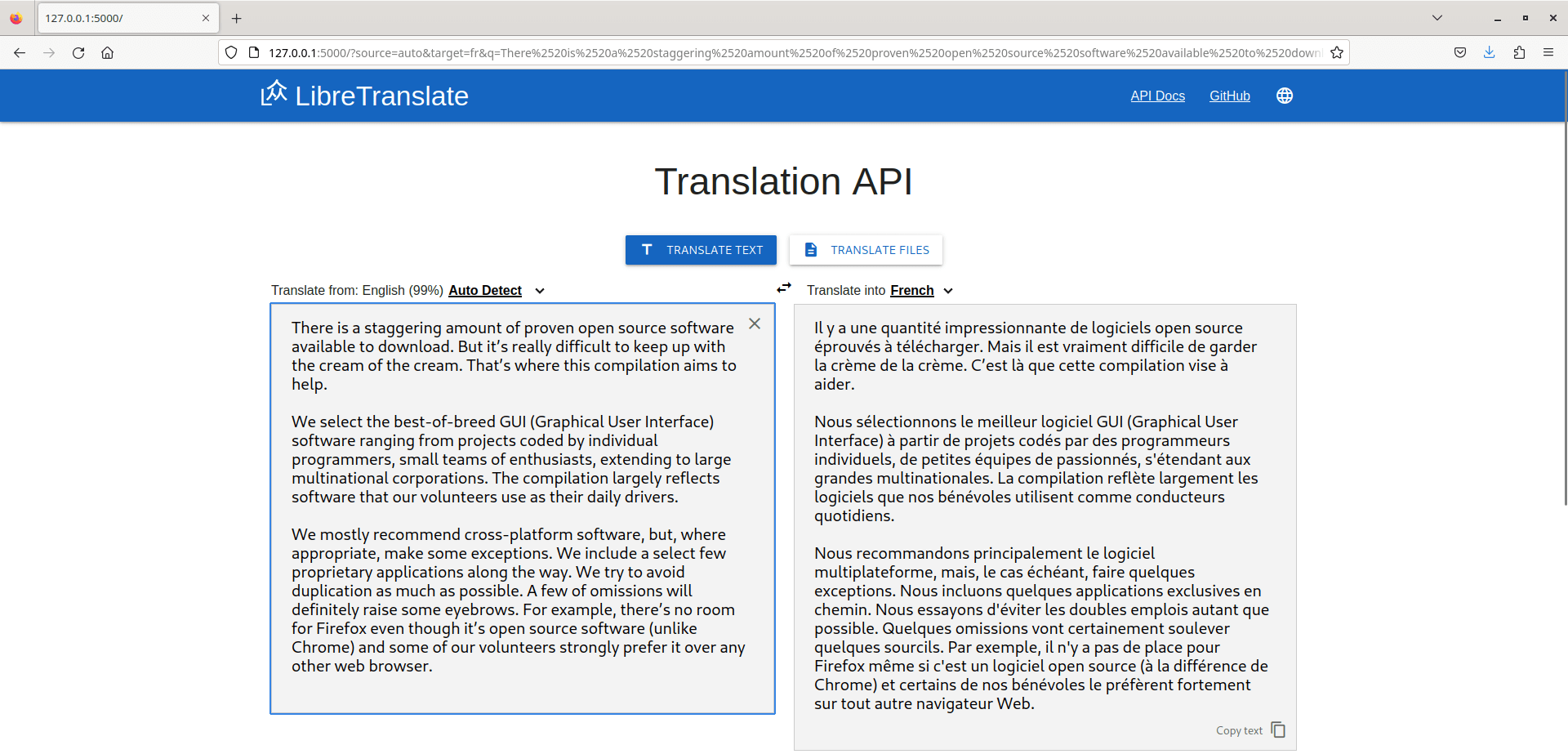In Operation
When you start libretranslate, you’ll be invited to point your web browser to http://127.0.0.1:5000

This is what you’ll see in your web browser. The software translates text or files. For the latter, it supports .txt, .odt, .odp, .docx, .pptx, .epub, and .html formats.

Slap some text into the left hand box. The software auto-detects the language (with an accuracy percentage). Now choose the language to translate to from the dropdown box in the right-hand box. In the example below, we’ve chosen to translate from English to French. The software translates on-the-fly.

We can copy the translation to the clipboard.
We’re not qualified to comment on the accuracy of the translation. In any event, the translation is handled by Argos Translate.
Summary
LibreTranslate offers an excellent web front-end to Argos Translate. It’s a much better experience than using the GUI available with Argos Translate.
With a really simple installation, you’ll have your own API server with no effort or bother. If you need to translate text or files and want to move away from the proprietary world of Google, you should definitely check out LibreTranslate.
You’ll need a machine with at least 4GB of RAM.
Website: libretranslate.com
Support: GitHub Code Repository
Developer: LibreTranslate contributors
License: GNU Affero General Public License v3.0
![]() For other useful open source apps that use machine learning/deep learning, we’ve compiled this roundup.
For other useful open source apps that use machine learning/deep learning, we’ve compiled this roundup.
LibreTranslate is written in Python. Learn Python with our recommended free books and free tutorials.
Pages in this article:
Page 1 – Introduction and Installation
Page 2 – In Operation and Summary
